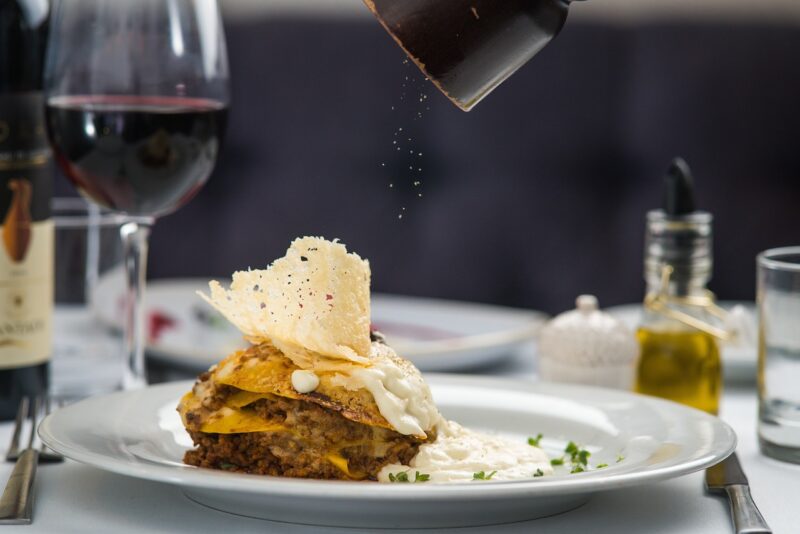The Mafia’s Stronghold in the Restaurant and Hospitality Industry
November 15, 2024

The Mafia’s influence has permeated various facets of American life, but perhaps none is as intriguing or impactful as its stronghold in the restaurant and hospitality industry. From the glamorous dining establishments to the corner pizzerias, mobsters have used their connections to create empires, launder money, and exert power over local economies. In this article, we delve into the historical roots, key players, and the intricate web of alliances that illustrate the Mafia’s enduring presence in this vibrant sector.
1. A Historical Perspective: The Origins of Mafia Engagement in Hospitality
The roots of the Mafia’s involvement in restaurants can be traced back to the early 20th century. As waves of Italian immigrants arrived in the United States, they often found themselves marginalized and excluded from mainstream society. Many turned to organized crime as a means of survival, and the restaurant industry became an ideal cover for illicit operations.
Italian immigrants brought with them culinary traditions and a deep sense of community, which culminated in the establishment of family-run restaurants. However, as these establishments grew in popularity, they also attracted the attention of gangsters looking to exploit the lucrative industry.
2. The Restaurant as a Front for Crime
Many restaurants operated by Mafia figures served as fronts for a multitude of criminal activities. These establishments were perfect for money laundering—profits from illegal activities could be integrated into legitimate business operations.
Another common tactic involved extortion. Mobsters would offer “protection” to restaurant owners, threatening violence or disruption if they refused to comply. In many instances, the owners felt they had no choice but to pay for this “service,” effectively placing their operations within Mob control.
3. Key Players: From Notorious Figures to Everyday Operators
Throughout history, many infamous mobsters made their mark in the restaurant and hospitality industry. For instance, figures like Anthony ‘‘Tony’’ Accardo were known to have interests in numerous establishments and used these connections to further their criminal enterprises.
Family-run restaurants, saloons, and nightclubs often fell under the domain of organized crime. These establishments served not only as gathering places for patrons but also as meeting spots for illegal dealings. The reputation of these venues would often thrive on their mob connections, attracting customers who were drawn to the allure of the underground.
4. The Connection Between Hospitality and Other Criminal Enterprises
The Mafia’s reach into the restaurant business was not limited to simple financial crimes; it extended into various other avenues of illicit activity. Often, restaurants served as a nexus connecting drug trafficking, illegal gambling, and loan sharking.
Mobsters used these dining establishments to facilitate deals, provide a safe haven for discussions, and maintain control over street-level operations. In major urban areas like New York City, the prevalence of these connections is well documented, showcasing how intertwined the hospitality industry and organized crime remain.
5. Changing Times: Law Enforcement and the Decline of Mob Influence
The evolving landscape of law enforcement and the scrutiny placed on organized crime have begun to curtail the Mafia’s influence in the hospitality sector. With technology, surveillance, and stricter regulations, authorities have made significant headway in dismantling organized crime operations.
Famous federal initiatives, such as the RICO Act (Racketeer Influenced and Corrupt Organizations Act), have empowered law enforcement to pursue and prosecute mafia figures more effectively. With public attention and increased legal limitations, many traditional mafia-controlled restaurants faced closure or serious operational challenges.
6. Current Landscape: The Enduring Legacy of Mafia Influence
While the overt influence of the Mafia in restaurants may have waned, the cultural and historical legacy lingers on. Numerous restaurants boast mafia history or connection, and these stories frequently attract tourists fascinated by the glitz and glamor depicted in movies.
Many contemporary eateries draw on this colorful past, either as thematic dining experiences or as an homage to their historical significance. The connection between the Mafia and the hospitality industry remains a fascinating narrative that continues to evolve as new generations discover this rich heritage.
Conclusion: The Unbreakable Bond Between the Mafia and Hospitality
As we reflect on the complex relationship between the Mafia and the restaurant and hospitality industry, it becomes clear that it embodies a rich tapestry of history, crime, commerce, and culture. The Mafia’s stronghold may have diminished in some respects, but the stories and legacies endure, capturing our imagination and reminding us of the profound impact organized crime has had on this vital sector of society.
The present and future will continue to see the repercussions of this fascinating liaison, sustaining our curiosity about the underbelly of a world that many only see as delightful dining experiences. The Mafia’s legacy in this industry is more than just a criminal past; it has shaped the culinary landscape and how we celebrate and experience food and hospitality today.







